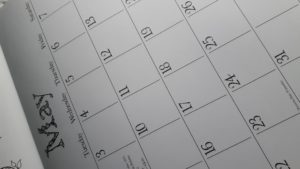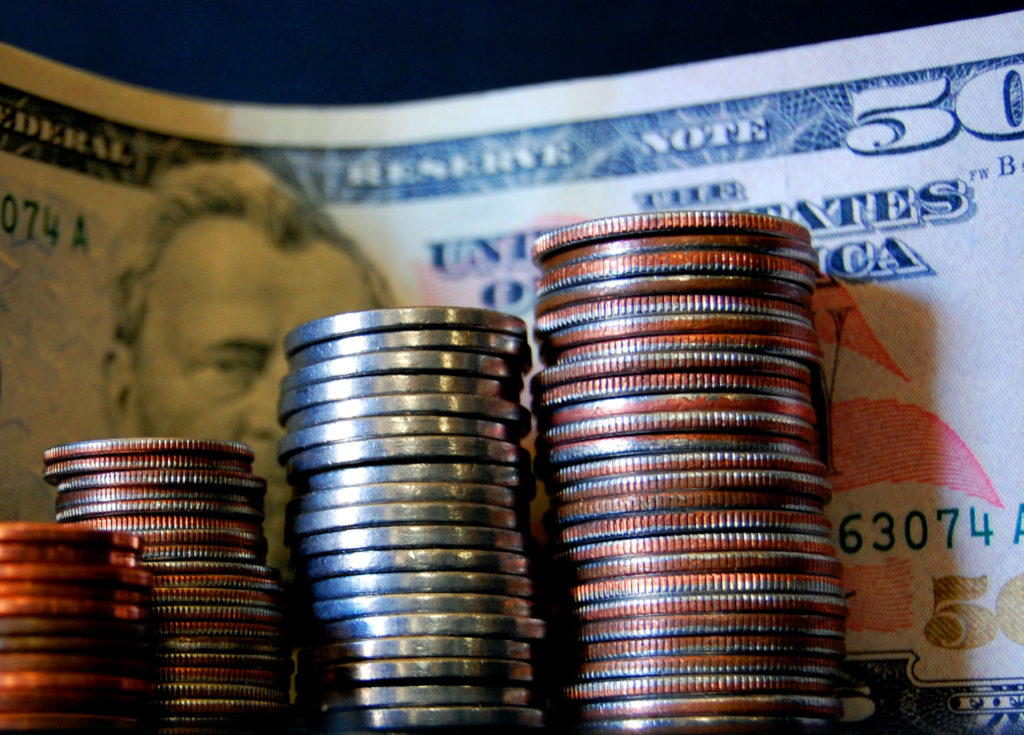How I Save Money Being Frugal
It seems like everyone is getting into the “How I save money being frugal” game. Articles on the topic are popping up everywhere—magazines, talk shows, the internet. I look into as many of these as I can. That makes sense doesn’t it? After all, I’m a frugal guy. I want to get everything I can out of my resources (Money is a major resource.), so I’m perfectly willing to investigate what others are doing to maximize theirs. After analyzing what’s being put out about saving money, it seems most people don’t realize there’s a difference between saving money (1) by spending less and “saving” money (2) by putting it away. In this post, I’m going to show you the difference between the two, and I’ll tell you how I save money. (Later there’ll be a list of ways to be frugal and save money.) The first method can be dealt with fairly quickly…
How I Save Money Being Frugal
How many times have you heard, “I just saved a lot of money! I got this on sale.” Or, “I save so much money using coupons.” Maybe, “I change my own oil and save money.”
Truthfully, you’re not really saving money when you do these things; you’re merely spending less.
Which. Isn’t. Bad.
Let me tell you about a takeaway from a class on household economics my wife took years ago. To put it simply the instructor explained that when you’re in an upscale clothing store and buy something from the markdown rack, you’re not saving money, rather you’re getting quality for your money.
That concept holds true across a spectrum of merchandise and services. Getting quality for your money is a frugal principle. Personally, I take advantage of this kind of “saving” anytime I can; it leaves me more to put away. And that brings me to the second form of saving…
Real Saving
Real saving means putting money away for a purpose. When, over time, you accumulate funds for something—a vacation, a new car, retirement, emergencies, or any number of things—you are really saving. You may have a total dollar figure in mind for some of the things you save for. Other savings projects may be open ended with available funds continuing to increase until they are called into use. In this situation contributions are often reestablished after the period of need has passed. Regardless, the object is to amass a significant amount of ready funds, not just a bit “saved” by spending less. That money may well be viewed “free money” to be used without constraint. (As I indicated above, you can empower this money by depositing it into one of you purposed funds.)
Frugal Ways To Save Money
Here’s how I save money: When I say I put money away for specific purposes, I mean I divide and allocate my income into four major categories/funds. They are an emergency fund, retirement, sinking funds, and a basic budget. (Some of these have several subcategories.)
Let me explain…
Emergency Funds
Emergency funds are just what the name implies; money I save for use in the event of an emergency. I save money (a designated amount) from every paycheck for this purpose. The purpose of an emergency fund is maintaining  financial soundness when disaster pushes expenses beyond the limits of your budget. Using your emergency funds should be your last choice before going into debt. (I’ll touch on this again, later.)
financial soundness when disaster pushes expenses beyond the limits of your budget. Using your emergency funds should be your last choice before going into debt. (I’ll touch on this again, later.)
How I Save Money For Retirement
Most people hope they can afford to retire at some point. They’d like the opportunity to pursue interests not particularly compatible with the need to work for a paycheck. These pursuits may involve travel, adventure, study, service, relaxation, or other; they’ll vary by person. The one constant is that they’ll require funding. Actually, despite the goal of no longer working for a living, you’ll still need money to live. (Don’t even begin to think Social Security will cover your needs.) That given, to fund this period of life you’ll need to save money while you’re working. Just as my emergency fund receives a set contribution every payday, every payday a predetermined amount of money is put into my 401(k).
I’m sure you noticed that this money is put into an investment account. That puts my money to work for me; my money earns money. If the time ever really existed when you could fund your retirement by putting it in a proverbial sock, it is no more. To fund your retirement, your money needs to generate more earnings than the amount of interest that is paid on a regular savings account by most banks. You have to put it to work earning more money for you.
Your workplace, probably, has a retirement plan. Where I work contributions are percentage based. I save money for retirement through my weekly contributions and the increase the investments make. This money is for my retirement. As long as I’m working, I will never touch it (although I could). I save that money for a specific purpose—retirement.
Sinking funds
A simple explanation of a sinking fund is money set aside for a purpose. The fund is built gradually through regular contributions. This money is generally intended to be used and replaced. Your emergency fund is really a sinking fund, but its importance warrants it to be considered separately from other sinking funds. Essentially, the same is true of your retirement account. An effective retirement account can be set up so that funds withdrawn to support you in retirement will be replaced—at least, in part.
Emergency and retirement accounts may be your most important (and largest) sinking funds, but you’ll want to have others. I tend to think of sinking funds as the backbone of my budget.
How I save Money In Sinking Funds
I use sinking funds to keep from being overwhelmed by bills and debt. I don’t like making installment payments, because a fairly hefty part each is interest. Interest is the price you pay for using someone else’s money. I’d rather avoid that fee and use my own money to make a one-time payment when I make the purchase. Sinking funds make that possible.
The money you put in a sinking fund is designated for a specific purpose. Things like vacations, car repair, and gifts are possible candidates for a sinking fund. Actually, any upcoming expense is eligible. It can be something with an expected “due” date or something you anticipate happening “sometime” for which you want to financially prepare ahead of time.
When You Know The Due Date
An example of an expense with an expected due date could be an oil change for your car. Oil changes need to be done fairly regularly; their based on mileage. Since you’re likely to know about how many miles you’ll put on your  car over any given time, you can estimate when your next oil change is likely to be due, and how many paychecks you’ll have between changes. I save money for my oil changes by determining the price I’ll need to pay for the service and then dividing that amount by the number of paydays between changes. I put back that amount of money each payday. When the time comes for the oil change, I take my car in, get it done, and pay. I can do it with my debit card, or a check, or cash, but (and this is going to sound strange???) I do it with my credit card. There’s a hack coming here…When I get home, I pay that balance off immediately. I get cash back on every transaction, and since I pay it off right away, there’s no interest charged.
car over any given time, you can estimate when your next oil change is likely to be due, and how many paychecks you’ll have between changes. I save money for my oil changes by determining the price I’ll need to pay for the service and then dividing that amount by the number of paydays between changes. I put back that amount of money each payday. When the time comes for the oil change, I take my car in, get it done, and pay. I can do it with my debit card, or a check, or cash, but (and this is going to sound strange???) I do it with my credit card. There’s a hack coming here…When I get home, I pay that balance off immediately. I get cash back on every transaction, and since I pay it off right away, there’s no interest charged.
One more thing: I start putting money back into the sinking fund as soon as I receive my next paycheck.
An Example With Numbers
A little more than a year ago I checked the tread on my tires. It looked to me like I’d need new ones in about a year. (Yeah, this is another example based on how much I usually drive.) From that point I gave myself 52 paychecks to save the money for new ones. I did some research and found that a new set of tires will cost about $500.00. By dividing $500 by 52, I knew I’d need to save $9.51 (let’s just say $10) a payday. That’s pretty simple math. (Remember this story. I’ll be adding some more information in a bit.)
You might be thinking, “What if he gets the money together and the tires have still have some miles in them?” That’s pretty simple too…I’ll hold that money for when I do need to replace them.
For many people another example of an expected expense would be replacing their laptop. Three years is the average working life of a laptop. Using that number, if a person started a sinking fund for replacing the laptop just as soon as he bought it, he would likely have between 36 and 156 paychecks (depending on how often he got paid) to make contributions to the fund before the money was needed.
You Know It’s Coming—Sometime
I just brought up replacing your laptop. Some people have to replace them on a regular schedule. As for me, for some reason my laptops last awhile. I had one that worked well for 8 years; I can, usually, count on 5 years. When you’re fairly sure about the timeframe in which you’ll buy, fix, or replace something, it makes knowing the amount to regularly contribute to a sinking fund simple. But…what to do about a sinking fund when the only thing you know is that sometime in the future you’re likely to need money for a particular purpose?
You have to go with a best guess.
When you have an event you can’t put on a timeline, go with an average—if there is one. If you’re pretty sure it will be quite some time before you’ll need the funds, do some research to see how long you’re likely to have. Or, it’s a little more risky, but you can go with personal experience.
The Unexpected Can Happen
So, what if an event sneaks up on you and you find you don’t have all the money you need?
Ideally, the event and the money come together at the same time. Then you don’t have to tap your emergency fund, redirect funds from other sinking funds (because then you have to play catch up with those) or go into debt. Of those options, using money from your emergency fund is best, but if you have to go into debt, keep in mind that having partial funds will reduce the amount you need to borrow. The important thing is to stick with (or return to) the plan in spite of the glitch.
Then, there’s the nonevent event. Sometimes, something you planned for doesn’t happen. Here’s an example: When I was in the Navy, there was a guy who started a sinking fund for work on his kids’ teeth. He did this as soon as he learned his wife was pregnant for the first time. Why’d he do it? Well, he’d had bad teeth when he was young and over the years as he was growing up that had cost his parents a (not small) fortune. In case his child was going to face the same thing, he didn’t want to deal with the kind of stress that had caused.
I don’t remember how much he put into that sinking fund, but it was a set amount that he deposited regularly.
And…
Can you guess where I’m going?
Yep, that kid had great teeth. He saw the dentist on the usual schedule, but graduated high school without having even one cavity and never needed braces. (By the way, it turned out he was an only child.)
So, what happened to the money that had been put away for dental work all those years? Dad put it in the sinking fund he’d set up for the young man’s college education. (That’s a sinking fund that’s almost impossible to over fund.)
Now that you know where those funds went, what do you think you do after a sinking fund is fully funded?
Fully Funded Sinking Funds
As I’ve been saying, a sinking fund is money you set aside for something specific. Sinking funds are how I save  money. There’ll be times when you have a sinking that’s fully funded: Whatever this money is purposed for will happen when it happens and, financially, it’s covered. When I’m in that position, I redirect the money I was putting into that sinking to another—at least temporarily.
money. There’ll be times when you have a sinking that’s fully funded: Whatever this money is purposed for will happen when it happens and, financially, it’s covered. When I’m in that position, I redirect the money I was putting into that sinking to another—at least temporarily.
A Few Notes
1) I just used the word “temporarily.” Most sinking funds are cyclical. Shortly after you use the money in one, you’ll want to start rebuilding the fund.
2) Good candidates for temporary funding are sinking funds you might only have “ballpark” figure for, like vacations or education. (I’m sure you can think of others.)
3) As you build your sinking funds, you’ll find you need to tap your fund for real emergencies less and less often, because you’ll already have the money to deal with the specific occasion.
How I Manage A fully Funded Sinking Sund
I mentioned above that I have a sinking fund for my car tires. I priced tires last year when I first thought I’d need to replace them this year and revaluated the price six months into my savings plan (sinking fund) for them and found  that the price of the tires I needed had gone up a bit. I adjusted the amount I was setting aside for them to offset the new price ($630 for the set of four). I started saving $15 a payday instead of $10. With what I had already set aside, that comes out to be $650 which was fine as the extra would help cover any taxes or service charges I might have miscalculated.
that the price of the tires I needed had gone up a bit. I adjusted the amount I was setting aside for them to offset the new price ($630 for the set of four). I started saving $15 a payday instead of $10. With what I had already set aside, that comes out to be $650 which was fine as the extra would help cover any taxes or service charges I might have miscalculated.
At the end of twelve months my tires still had some wear left in them, so I decided to hold off on buying new ones. In fact, I got about three and a half months more use out of my old tires before I decided they were worn enough to replace them. It so happened that the week I bought the tires they were on sale. I ended up paying $595.73 total for the set. After all was said and done, I had a surplus in my tire fund of $54.20.
Because I now had new tires and it will probably be several years before I need to replace them again, I decided to move that $54.20 surplus to my sinking fund for the car insurance deductible. The addition of the extra money made that sinking fund fully funded, so I’m now holding that money in case I need to make a deductible payment (I sure hope I don’t!), and am applying the money that was going to that sinking fund to another for now.
Here’s What I Want You To Get From This Story:
1) As long as I have sinking funds that are not fully funded, I use any surplus to speed up the process. (Back to that $54.20 that I moved from one sinking fund to another, when I do the paperwork for my budget, I really like to use whole dollars that end in five or zero. It keeps bookkeeping simple. But, I’ll work with what I’ve got.)
2) Even though I’ll direct the excess from a fully funded sinking fund towards another, it’s not necessarily a permanent change. When it becomes appropriate to start rebuilding the original fund, I make the necessary adjustments.
And with that, I need to tell you that before the end of this year, I will start—again— building my sinking fund for tires. I’ll have the money for a new set long before I’ll need it.
The Money I Save Money Using Sinking Funds
The more items/events I have funded, the less likely I am to need financing and can avoid paying interest. To some extent sinking funds are like the type 1 “saving” back in the first paragraph of this post. You’re saving money by spending less—in this case, on interest. Now, think about this, you could in essence “borrow” from your sinking funds, put yourself on a payback schedule and charge yourself interest. As you pay yourself back, the interest could be used to rebuild the fund more quickly or contributed to another sinking fund.
I
I Don’t Use Sinking Funds For Everything
As much as I advocate using sinking funds, I don’t use them for everything. Sinking funds are basically for projects that require a significant amount of money that can be gathered over time and are generally recurring. That doesn’t describe day to day life. Expenses like groceries, fuel, utility bills, or rent/mortgage are certainly recurring but much more frequently than something financed through a sinking fund. Essentially, funding day to day life should be a separate function of your budget. (I’ll cover that in the following section.)
How I Save Money: Think Budget
For most of us, the money we work for and with—right now—is the means for financing our day to day life and our future.
I’ve posted several articles on how to build a budget. One point I make early on is that we need to know our spending habits and the only way to do that is to keep track of them (use a spending log/journal). When I first started doing that, I was amazed to see how much of the money I felt I needed for day to day living was really spent in frivolous ways. (Too many treats, too many spontaneous purchases…You can call it wasted money.)
When I saw how much I really needed for daily life (categories like rent or mortgage, fuel, groceries, insurance, etc.—including some reasonable entertainment), I realized that after covering those things and frittering away the rest of my paycheck, I’d always be playing catch-up with large expenses (which would include retirement) that I didn’t have to face in short-term cycles. Budgeting makes a lot of sense when you think about everything your money needs to do for you.
Developing a budget is a process. I’ve already said you need to know what you’re spending your money on for day to day living. You need to evaluate the necessity of each expense and allocate reasonable funds to pertinent. That means that as you are working through your figures, you’re finding ways to eliminate wasteful spending.
I’m sure you know you’ll go through some paper before you have a “final” form. You’ll also want to have a spreadsheet to chart how well your budget is working for you. I want you to know that that “final” form isn’t set in concrete. While setting limits on spending is a primary function of a budget, there are times those limits will need to be reset. Family size, income increase or decrease, natural disaster, and unexpected expenses are among the lifestyle changes that may require a budget change. That said, don’t fall into the trap of making adjustments for any and every excuse. That’s what sinking funds are for, and as many as possible should be included as categories in your budget. (An emergency fund should be the first.)
Budget Hacks: Save More
I’m all about having a budget. A budget is a great organizational tool and using your budget’s spreadsheet helps keep you honest. But…I’m always thinking “Can I get more out of this?”
Don’t get me wrong. I don’t cheat on my budget. I don’t over spend, but if I can figure out a way to under spend, I’m on it in heartbeat. I’m talking about saving in categories like fuel for the car. The price of fuel tends to fluctuate from day to day, so when I set my limit for buying fuel, it had to be an amount I could work with. Here’s the hack: When I’m out driving and I see a station with a slightly lower price, I go ahead and top off my tank. I often manage to save a few dollars a week doing this. The same idea holds true for grocery shopping: I take advantage of those sales and coupons I mentioned early in this article.
Here’s another hack: As I was putting together my budget, I realized that there are seasonal considerations that affect what I’ll need to spend in some categories like fuel and utilities. I felt it was reasonable to take that into account and set those spending limits towards the higher end. This means that during the off season I’m likely to have some surplus every pay period.
Call it savings, surplus or extra money, just before I get my next paycheck, I apply those extra money to one or more of my sinking funds. Believe me, I understand how a person can say, “But it’s less than $10!” You feel like you want to go out and blow it at McDonald’s or a Starbuck’s coffee. But, think about this: Let’s say you get paid weekly and your surplus is “only” $5 a pay period, but you’re able to achieve it half the year (26 weeks). That adds up to $130. Suddenly that $5 isn’t so “only” is it? And, of course, your savings could be more than $5.
Some Notes
1) I’m sure you realize there are more ways to hack your budget for savings than I’ve included. We can almost always find a way to under spend.
2) If you have trouble putting together a workable budget, it’s possible you don’t make enough. Take a look at my posts on making extra money. You can earn extra money by being a copy editor, detailing cars, house sitting, pet sitting, or a lot of other tasks you can do in your spare time.
3) I’ve brought up a spreadsheet several times. I’ve said it’s helpful in keeping my figures correct and keeping me honest. Another thing that’s helpful (at least in the beginning of living on a budget) is keeping in all of my savings, except retirement, in one account. With one account you can easily see your total and should you need to move money between your funds, you’re doing it on paper; you’re not moving them from one bank account to another (Money can get lost when you do that.)
Raises And Windfalls
When I receive a pay raise, my response is to review my budget. I look at the allotments for day to day spending. If I have a facet that’s tight, I might allow myself a small increase for that expense. But, I’m likely to look at the figure in force and think, “Well, I’ve been making it so far,” and leave it alone. More often I’ll increase my contributions to one or more sinking funds. (Remember, a budget doesn’t have to be static. Later, I can review and reallocate funds if I really need to.)
As for windfalls, such as a tax return or a really successful yard sale, many people think, “Party!” Me, when I get that money, it immediately goes to build up a sinking fund. That’s how I save money.
Thinking Out Loud
The money we earn. That money has to support daily life as well as the future. We have to have a plan for our money. One that allows us to have the funds we need now and to save for occasional large expenses as well as retirement. An itemized budget can help us keep our immediate expenses from overwhelming the power of our income. Sinking funds can be a part of the budget. Funding them can help us be prepared financially to face number of anticipated events, including retirement. An Emergency fund is perhaps the most important sinking fund as the money in it can help cover unexpected events. Regardless of how well we think we’re managing our financial plan, we should always be ready to take advantage of ways to enhance our savings…Planning and practice that’s how I save money.

